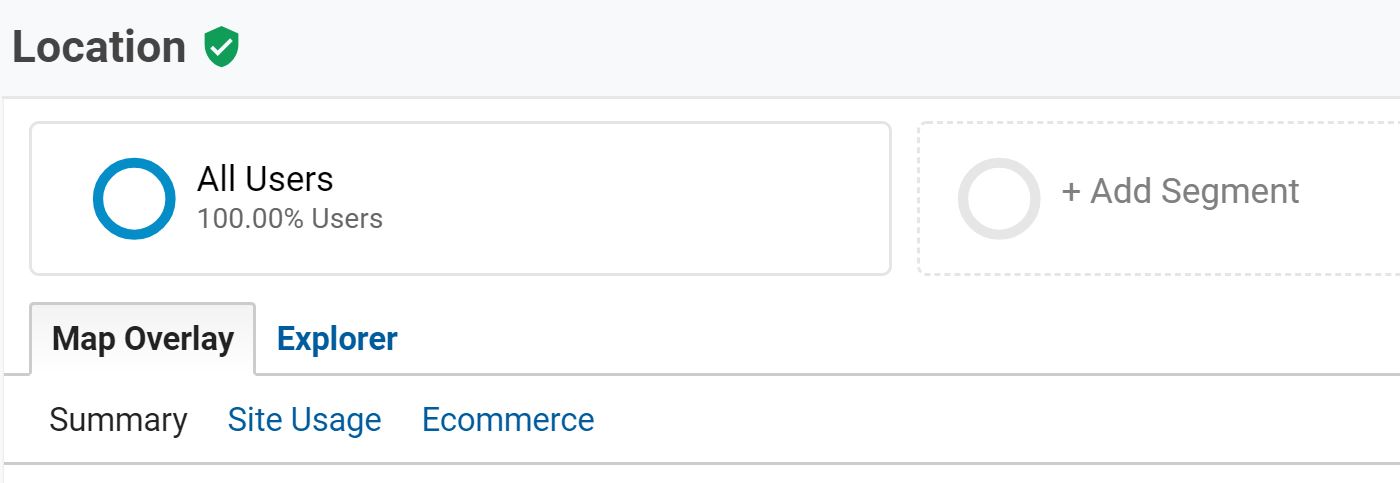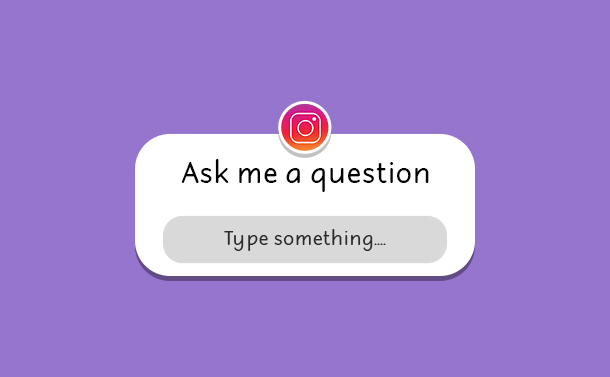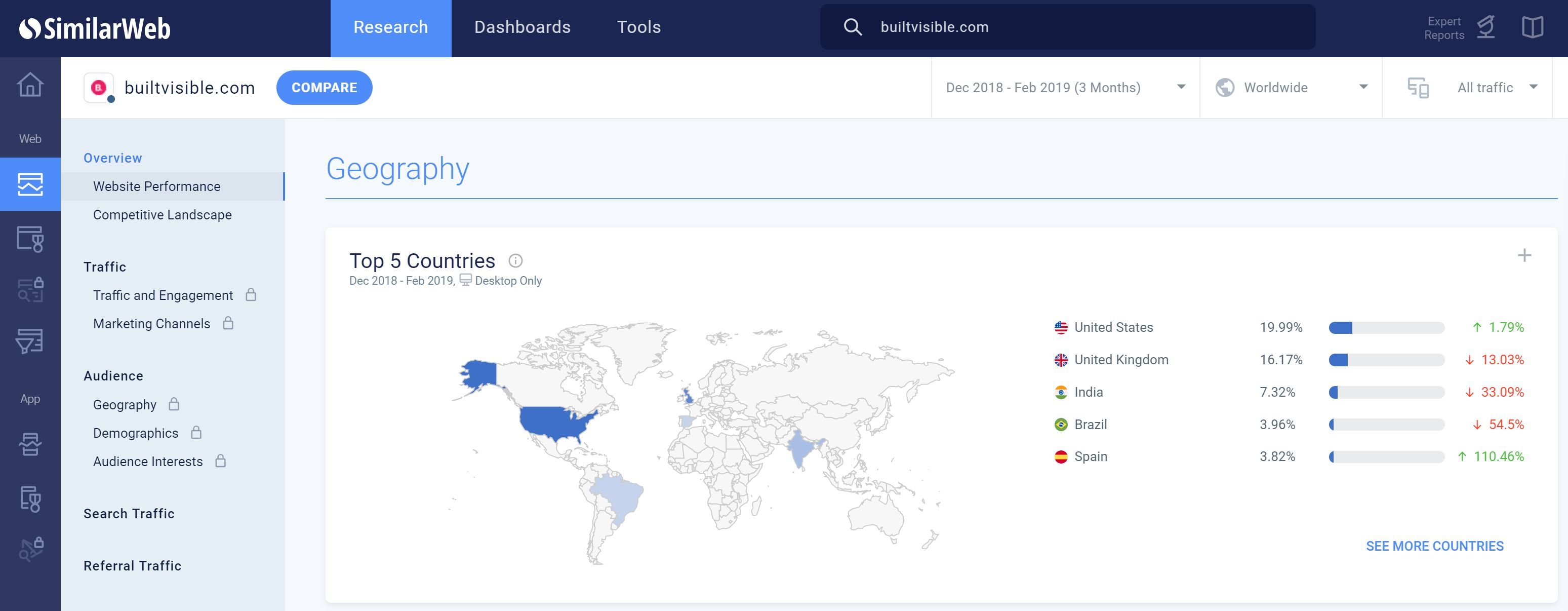Start with your existing customer base
Analytics
If you want to understand your existing audience, it’s essential to invest in the integrity and relevance of your analytics data. If you haven’t already, get your goals set up in GA. Without good data, you can’t measure the quality of your traffic and you won’t be able to extrapolate any kind of meaningful insights about your audience and how best to serve them.
With goals set up correctly, you can use your data to learn and make informed decisions about the content and traffic on your website that is most likely to convert. If you’re completely new to Google Analytics, start with our beginners’ guide here.

Simply click on the corresponding Goal Set under the Explorer or Map Overlay tab of your Google Analytics data (as shown above) to see the conversion rate for the following traffic data.
- Location – Find out where your biggest converting audience comes from under Audience > Geo > Location. This will help you tailor your content with information specific to different regions.
- Technology – Adapt your content to the devices, browsers and search engines your audience use. For example, taking a mobile first approach if your users are predominantly mobile would be a great way to integrate findings within your strategy. This can be analysed under Audience > Tech > Browser & OS and Audience > Mobile > Overview.
- Traffic Sources – Take a look at your conversions in relation to your audience and goals in Acquisition > All Traffic > Source/Medium. Here, you might see that Facebook traffic tends to convert the best. Hence, you may want to weight your efforts toward this channel.
- Landing Pages – By following the path Behaviour > Site Content > Landing Pages, you can see which content draws in a converting audience. Continue creating related pieces to attract more of your audience and increase conversions.
Instagram Stickers
All major social media channels have functionality for business pages to view their audience insights, but Instagram went a step further in July 2018 with the introduction of the question sticker. For those who are new to the concept, Instagram Questions is a function that allows all accounts types to ask their followers (and non-followers) questions within their story which is then open to response. The Instagram account holder can view the responses privately and chose to share and answer none, some or all on their story with the questioner remaining anonymous by default. This is a great way to engage with your audience, build trust and earn loyalty.

Back in 2017, Instagram released polls to add to stories. Polls are a great way to capture quantitative data with a ‘this or that’ format.
From my own personal use of Instagram, I’ve noticed influencers use polls to inform their content decisions. For example, ‘Should my next YouTube video be on my summer skincare routine or natural makeup?’, ‘What day should I post my videos, Thursdays or Sundays?’ and ‘Do you prefer my fashion or beauty content?’. Not only will you find out who your audience is, but also how best to serve them.
Hashtags
One of the oldest social media tactics in the book, a unique hashtag can give you a load of audience data to work with. For example, you can easily find and gauge perceptions, issues, and praise associated with your product or brand and see the size of your influence on Instagram and Twitter.
There are platforms that can analyse the demographics and interests of those mentioning your brand or product. My favourite is Crimson Hexagon where it is also possible to set up parameters and rules for a refined and accurate approach. Most social listening tools have functionality for competitor monitoring, engagement tracking and trend analysis.
Depending on the size of the business, I would also recommend visiting the account pages of customers to help build customer personas and understanding. While you’re there, why not see what hashtags they’re using? Researching and using well-targeted hashtags will only reveal more potential.
Your Internal Teams
Don’t forget about team members and departments within your business who will have some great insights into the customer base, target audience and the kind of content that would fit best.
If you want your content to be a lead generator for new business, then your sales team can help in defining the perfect customer profile. They could reveal:
- The types of customers you’re already working with, so you can tailor your content to attract more like them
- The types of individuals, publications and industries to pursue
- The publications and blogs your ideal customer reads
If you want your content to be helpful to your current and future client base, then your customer service, help desk, and support team can help in defining the right content for your target audience. They could tell you:
- The most common customer support requests your business receives
- Questions and issues your customers are looking to overcome, shedding light on the solutions they need you to provide
- The level of detail and format your customers prefer
Growing your target audience
Survey Data
When in doubt, ask. This couldn’t be truer for audience insights. Luckily for marketers, there are now research tools to do it for us, allowing you to spend more time creating content and less doing research. TGI Kantar is a great example of a consumer insights tool and one that has informed many content marketing and branding strategies.
TGI Kantar releases survey led data which helps identify and drill down into the interests, motivations, and behaviours of consumers, aiding a strategy aimed at right people. With samples on TGI Kantar seeing a minimum of 10,000 respondents per pool, it provides an extensive insight into product/brand use, leisure activities, demographics, and – most importantly – the similarities and patterns in these areas which will inform an accurate audience persona. It can also be used to tell you which social media sites your audience frequents, so you know where to prioritise efforts.
Imagine you’re a business about to launch a new dairy-free product, TGI could reveal insights for your target audience such as:
- Your audience are most likely to reside in a city
- Millennials dominate your audience, followed by Generation X
- Their eating habits are influenced by food intolerances and health benefits
These data points can then influence your content marketing strategy and content plan. For example, you could produce content on topics such as ‘best restaurants in London for sensitive tummies’ or ‘street foods you didn’t know included dairy’.
Competitors
Last, but not least, there is readily available competitor information to use to your advantage. This can help you further pinpoint the type of audience you should be creating content for.
- SimilarWeb’s insights tool is extremely comprehensive when it comes to viewing competitor demographics inclusive of location, device, social traffic, similar sites, and interests. You’re also able to view top referring categories and destination sites allowing you to tap into their interests further.

- Amazon’s audience research tool, Alexa is great at finding gaps in content and revealing unexpected opportunities through collecting information on competitors it’s already working for. There is great power in knowing the sites that share your audience, using their success to inform your own decisions. There is also a feature that uncovers backlinks that drive traffic. Particularly handy for revealing what your target audience read online. Use to your advantage for future link building activity.

- Brandwatch (Audiences) looks at the people who follow your competitors on social media. It allows scope for analysing personal demographics, the content they share/repost and whom they follow that is of authority.
What are your best tips and tools for finding the right audience to cater your content towards?
